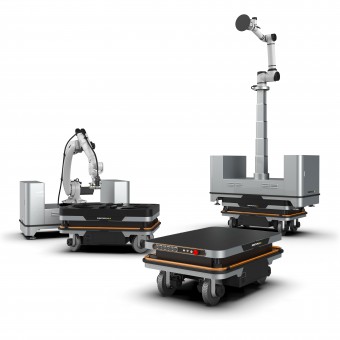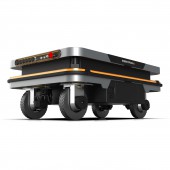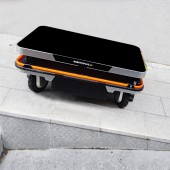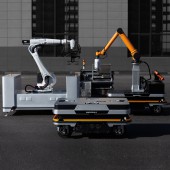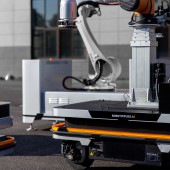DESIGN NAME:
AGV
PRIMARY FUNCTION:
Construction Heavy-Duty Chassis
INSPIRATION:
The construction industry is facing problems including labor shortage, poor construction quality and low productivity. In addition, complex environment, noise and dust, and safety risks are still sore points of traditional construction industry. So, it leads to the idea of producing a construction chassis with a friendly human-machine interaction mode to help construction robotic arms improve the level of construction industrialization.
UNIQUE PROPERTIES / PROJECT DESCRIPTION:
AGV (Automated Guided Vehicle) is a platform specially designed and optimized for complex building construction environment, capable of being stuffed with robotic arms, or a lifting system as well as robotic arms. It can plan its own behavior according to the complex external environment, and help humans engage in dangerous construction work with its superb barrier-crossing ability and athletic performance.
OPERATION / FLOW / INTERACTION:
The AGVs use Simultaneous Localization and Mapping ((SLAM)) and dual radar 360-degree detection of obstacles to achieve autonomous positioning in the construction scene, ensuring high positioning accuracy and safety of ±5MM. It adopts a unique four-steering-wheel navigation algorithm to achieve autonomous path planning, obstacle crossing and other functions, flexible and safe. In the face of complex tasks, the AGV was internal equipped with a self-developed modular system. After the rapid independent assembly, it can complete the rapid arrangement of the work position of medium-sized industrial robotic arms within 500KG through the self-adjusting platform,finish the aerial work with the lifting system and collaborative robotic arms and independently fulfill logistics tasks. In addition, the large load of the chassis can meet the multi-scenario need in factories and construction sites.
PROJECT DURATION AND LOCATION:
The AGVs began development in March 2019, completed in June 2020, got CR certification in August 2020 and was officially released to the public in early September 2020. In mid-September 2020, the AGV was the first construction robot to be unveiled at China International Industry Fair. Since December 2020, the AGVs has participated in the construction of the site of the 1st National Congress of the CPC in Shanghai and were on display in March 2021 to be inspected by Xi Jinping, the General Secretary of the CPC.
|
PRODUCTION / REALIZATION TECHNOLOGY:
The machine has a smooth shape and a surface with colorful adjustable indicator light belts to complete the whole human-machine interaction. The surface is covered with 3A green lacquer, and the whole machine is made of high-strength and low-density aviation aluminum with efficient heat dissipation and good stability. The main framework adopts a dustproof and waterproof design whose protection level can reach IP 67. The parts are oxidized and wear-resistant and the steering wheel is made of high-quality rubber with low operating noise, which can perfectly cope with the complicated construction environment.
SPECIFICATIONS / TECHNICAL PROPERTIES:
1200(length)*800(width)*400(he
ight)mm
TAGS:
Intelligent robot, AGV, building chassis, construction, robotic arm
RESEARCH ABSTRACT:
Traditional construction factories use fixed machines and mobile guide rails for fixed-point processing, which is limited by the production environment, can only process single component, and fails to meet the demand of Flexible Manufacture System (FMS). Therefore, we proposed and designed a mobile solution for robots carrying mobile chassis, which can realize various combinations of robots and process requirements to achieve the switching of complex construction scenarios, and flexibly satisfy the needs of large-size component production. The modular combination approach also lowers the production costs.
CHALLENGE:
The project requires a self-developed modular system to cooperate with robotic arms for complex construction tasks. It requires basic knowledge of design and construction to ensure the safe operation of this dangerous industrial equipment. The designers developed a new four-steering-wheel navigation algorithm to accomplish autonomous path planning, obstacle crossing and other behaviors in a safe manner and try their best to make the most precise positioning. They are also required to have extensive experience in the construction and programming, in order to achieve multiple scenario applications in factories and construction sites, reach the largest loading, respond more flexibly to the production needs of large builds, and lower the production costs.
ADDED DATE:
2021-03-03 07:30:26
TEAM MEMBERS (2) :
Wufan and Menghao
IMAGE CREDITS:
Fan Wu and Hao Meng, 2020.
|



